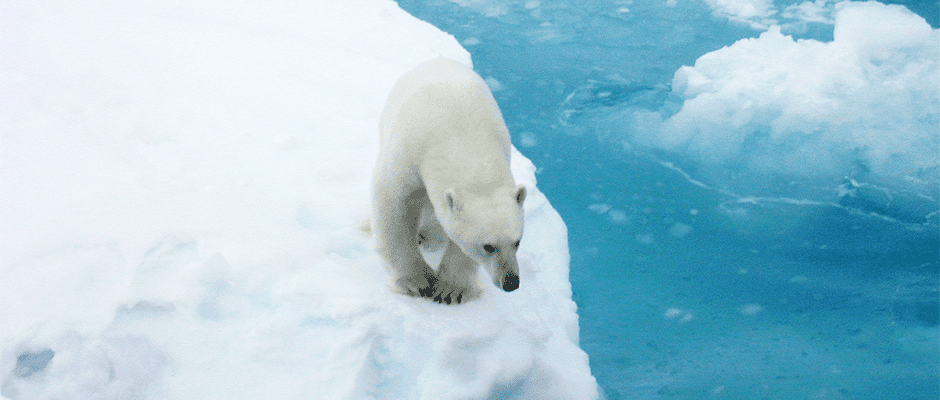Share this article
Model helps balance polar bear conservation and subsistence harvest
Despite the polar bear’s (Ursus maritimus) threatened status due to habitat loss driven by climate change, a recent study suggests that — with accurate data and responsive management — people can harvest it to meet subsistence needs without further harming its populations.
A team of biologists from the U.S. Fish and Wildlife Service, the U.S. Geological Survey and the University of Washington developed a model to identify a management system that can help continue the subsistence harvest of polar bears without exacerbating the adverse effects of vanishing sea ice. In many parts of the Arctic, polar bears are an important nutritional, cultural and economic resource.
The researchers used the model to project polar bear populations 50 years into the future. They based the model on how the environment’s decreasing ability to support bears is likely to interact with the animals’ removal by humans. The scientists used sea ice data from satellites to predict habitat change over time and then examined what would happen to the population in the altered landscape under different harvest levels, based on updated estimates of population size and productivity.
“It’s the first harvest assessment model for the species that directly incorporates future changes in habitat availability,” said Eric Regehr, principal quantitative ecologist at the University of Washington’s Polar Science Center and first author on the paper in The Journal of Applied Ecology.
Drawing from field data and other studies, the model also incorporates demographic factors such as sex, age, reproduction and survival to describe how crowding in the bear’s reduced habitat would affect response to harvest.
“An advantage of this work is that it integrates a detailed life history model with a plausible model of density dependence,” Regehr said.
The team found that the typical harvest rate, 4.5 percent per year with more males than females, is unlikely to pose additional risk to polar bear populations that are stable and have good data, Regehr said, but given climate change and rapid melting of sea ice, or if population sizes decline, the safe rate of harvest could decrease.
Governmental, nonprofit and indigenous stakeholders across national borders have expressed interest in using the improved population model to inform harvest for the species. The model is included in the polar bear Conservation Management Plan under the Endangered Species Act, which the USFWS published in January in coordination with 15 Alaskan and international organizations.
Values-based opinions have sometimes clouded the discussion of polar bear harvest under climate change, Regehr said.
“We provide an improved, science-based tool to understand the situation,” he said. “Hopefully that’s a good step forward.”
Regehr suggested the framework could also be used to evaluate the harvest of brown bear (Ursus arctos) and black bear (Ursus americanus) populations experiencing habitat change, and with some tweaking, it could be applied to less-related species.
Header Image: A polar bear peers into the water at the edge of a floating ice sheet in the Chukchi Sea between the U.S. and Russia. ©Kathy Crane








